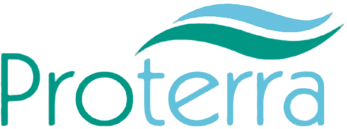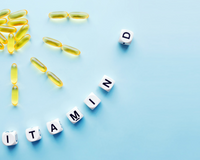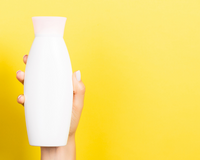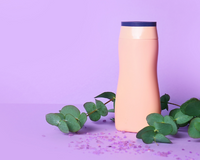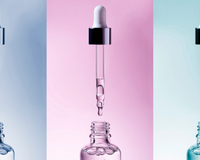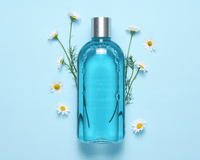Care Free Curl Hair Products
Care Free Curl Hair Products are made especially for dry curls and help keep hair from breaking. So, Care Free Curl products are great for body waves and natural styles, and they give dry, brittle hair as much moisture as possible. Also, Care Free Curl has been making products that are especially good for curls for a long time.
Even though a curl activator can't magically make straight hair curly, it can do wonders for waves, curls, or kinks that are already in your hair. A good curl cream will add moisture, make your curls shine, and keep them from getting frizzy, leaving you with clearly defined curls.
But if you don't want crunchy curls and a buildup of oil, you'll need to find a product for curly hair that works with your hair type. So, to help you find your next holy grail of hair care, we've put together a list of the best curl activators. There's something for every hair texture, from classic curl cream to lightweight gel to curl-refreshing spray.
Care Free Curl Hair Products Reviews
It can be hard to find the best hair products for your natural hair when there are so many to choose from. Things don't have to be like that! Think about what kind of hair you have and have fun trying out different shampoos, conditioners, and sealants to find the one that works best for you. Choose a moisturizing shampoo that you can use every day. Look for a shampoo with moisturizing ingredients like black castor oil. Shampoos with sulfates should also be avoided because they dry out hair, make it frizzy, and strip it of its natural oils. Look for shampoos that say they are SLS-free or ALS-free and that add or keep moisture in your hair.
Use clarifying shampoos on a regular basis to get rid of buildup. If you use more sealing treatments on your hair, you may need to use a clarifying shampoo every couple of washes to get rid of the buildup and clean your hair deeply. Look for the word "clarifying" and deep-cleansing ingredients like green tea or African black soap on the labels of these shampoos.
Care Free Curl Hair Routine
Use a conditioner that keeps your hair moist on a regular basis. There are two ways to use conditioners: leave them in or rinse them out. After shampooing, you should use conditioners with words like "moisturizing" or "hydrating" on the label. Silicones shouldn't be on the list of ingredients in your conditioner because they can dry out your hair. Many people with natural hair choose conditioners with shea butter to keep their hair moisturized. Use a deep conditioner with protein when you need to.
If your hair dries quickly and looks dry and frizzy no matter how much product you use, you may have high hair porosity. This means that your hair can stand up to water. Deep conditioning could be helpful once every two weeks or more. Look for conditioners that say "protein" or "restorative" on the label. The product may say to use heat to help it absorb better, but you shouldn't do this too often because heat makes things dry.
Choose Natural Products
Start with one brand from the section for natural hair. If you're new to wearing your hair naturally, you might want to try a few different products from the same brand to see how your hair reacts to them and get a feel for the different kinds of products. As you learn what works best for your hair, you may want to try products from different companies.
Play around with your gel and conditioner to get rid of flaky skin. When a certain conditioner is used after a gel, it could cause flakes. Use a spray bottle to lightly wet your hair, and then use a leave-in conditioner that is made with water.
When certain gels are used with certain conditioners, they always flake. If you find a problem once, it will most likely happen again. It's hard to tell if it's the gel or the conditioner. You should know that these two brands don't work together. You can use less conditioner or change the kind of conditioner or hair gel you're using.
How Should You Choose Hair Oils?
Butters are great for making hair smooth and healthy. Fatty acids, which are found in butters, coat and protect your hair shafts. Some of the most popular natural hair butters are made from shea, cocoa, mango, and murumuru. Mango butter is a great alternative to shea butter for people who are allergic to it. It also protects against UV rays. If your scalp is bothering you or giving you trouble, try kokum butter.
Murumuru butter is great for making curls stand out and making hair more flexible. If you find that butters weigh down your hair, try oils instead. Most likely, you'll need to use an oil, a butter, or both to seal in the moisture from your conditioner. If you feel like using butters like shea butter makes your hair look dull and heavy, you might want to try just using an oil. Popular natural hair oils include safflower, emu, neem, natural baby oil (from a natural company like Burt's Bees), and almond oil. You can use these oils on both your body and your hair. Castor and jojoba oils are used to seal because they are thicker. Apricot, avocado, and coconut oils can be used before shampooing or to rinse out the shampoo. Coconut oil, in particular, is excellent for moisturizing.
How To Stack Products?
Use one of each kind of product when you stack things. When putting products like conditioner, gel, oil, and butter on top of each other, make sure that each one has a purpose. For example, it makes sense to use one oil before putting on one curl of butter because they have different effects on your hair. It would be too much for your hair if you added three different oils and two kinds of cream butter to the mix. Your hair would build up products and need to wash more often.
